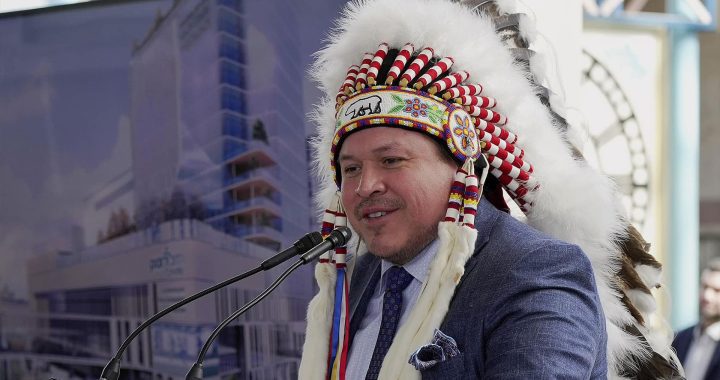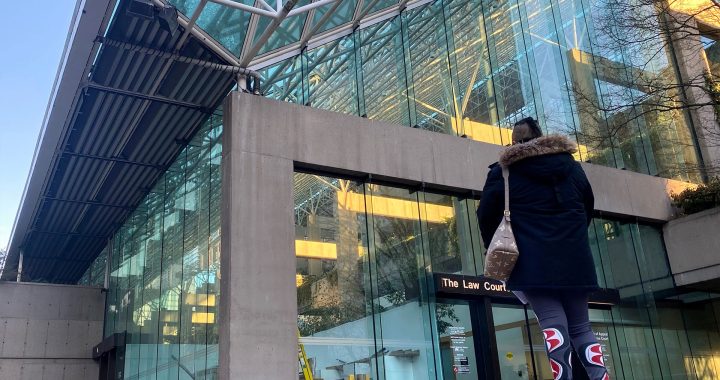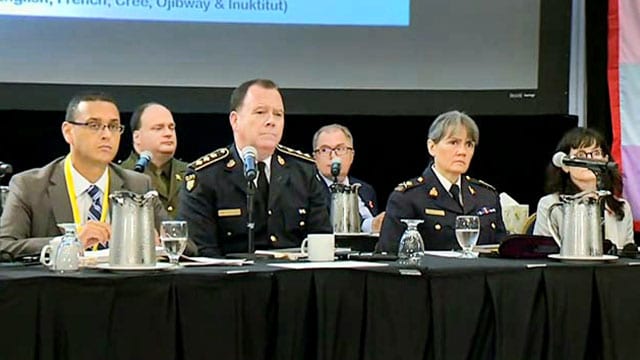
- RCMP participated in the institutional hearing on Police Policies and Practices in Regina before the MMIWG Inquiry. (APTN file)
The team leading the federal Missing and Murdered Indigenous Women and Girls Inquiry say their job might be easier if the RCMP had been more co-operative when it comes to releasing documents.
As set out in their terms of reference, a Forensic Document Review Team (FDRT) was established to review police and institutional files to identify systemic problems to do with the protection of Indigenous women and girls, and to make recommendations concerning acts of violence and deaths and disappearances involving them.
But according to an inquiry commissioner, the RCMP is not fully co-operating and the team experienced “ongoing production issues on some files.”
“[When] we requested a number of files, I believe it was only with the RCMP that we had challenges with them asserting privilege and that to a degree we did not agree with,” said Commissioner Qajaq Robinson, who has been with the inquiry since its inception.
Recently, the inquiry announced the release of its final report will take place June 3 in Gatineau, Que.
READ: National MMIWG inquiry will release final report June 3 in Gatineau
500,000 pages released to inquiry
To date, thousands of police documents have been disclosed to the inquiry, an RCMP spokesperson said.
Mandated to review and refer cases about missing and murdered Indigenous women and girls to the commissioners, the team obtained and then combed through police, coroner, attorney general files and court records.
This material was solely for the FDRT’s analysis and kept strictly confidential.

Commissioners Qajaq Robinson and Brian Eyolfson with the national inquiry. (APTN file)
“We requested numerous files and we received thousands of documents back,” said Robinson.
“We needed a robust document management system [for it].”
According to the RCMP, thousands refers to 115,079 documents, with a total page count of just over 515,000.
To date, approximately 119 investigative files were disclosed to the inquiry, and more than 200 policy and related documents.
Of the 119 files, 37 of them are from 1994 or earlier, wrote a spokesperson based at RCMP headquarters in Ottawa.
The investigative files from the RCMP include cases of homicides, missing persons, sudden deaths, assaults and sexual assaults from across Canada.
In September 1, 2016, the inquiry officially started and since then has been examining the historical and ongoing tragedy of missing or slain Indigenous women and girls.
It is unclear exactly how many missing cases there are in Canada.
In the past two years, the RCMP has co-operated with the inquiry on the production of investigative files and policy documents that relate to the inquiry’s mandate, wrote Cpl. Caroline Duval with the RCMP national communication services.
“Investigative files must be redacted to exclude information that is protected under the Privacy Act, the Young Offenders Act and the Canada Evidence Act.”
Duval further added it was the RCMP who “asked the inquiry to issue subpoenas for the files to allow the RCMP to provide more information than would otherwise be permitted under the Privacy Act.”
As for the two files in dispute, titled: “Missing Person: Missing Indigenous Woman” and “Homicide: Murdered Indigenous Woman,” the RCMP and inquiry are hoping to secure a hearing date before mid-May to resolve the issue.
READ: National MMIWG inquiry wages court fight for RCMP files

The Commissioners at the institutional hearings on Police Policies and Practices in Regina in June 2018. (APTN file)
To date, the forensic team made recommendations to the commissioners about systemic problems and weaknesses to do with police investigations, coroner practices and prosecution outcomes and referred cases where new information was heard with investigations to send to the appropriate public authorities.
What the forensic team cannot do is disclose any information publicly, examine the exercise of prosecutorial discretion by Crown counsel, re-investigate police investigations or conclude any misconduct or make conclusions about any civil or criminal liability of any person or organization.
Grandmothers on inquiry forensic team
Under the supervision of the inquiry’s director of research, Dr. Karine Duhamel, the forensic document review team consists of five members, four of which are all from British Columbia, and one from Quebec.
The forensic team is permitted by Section 11 of the Federal Inquiries Act.
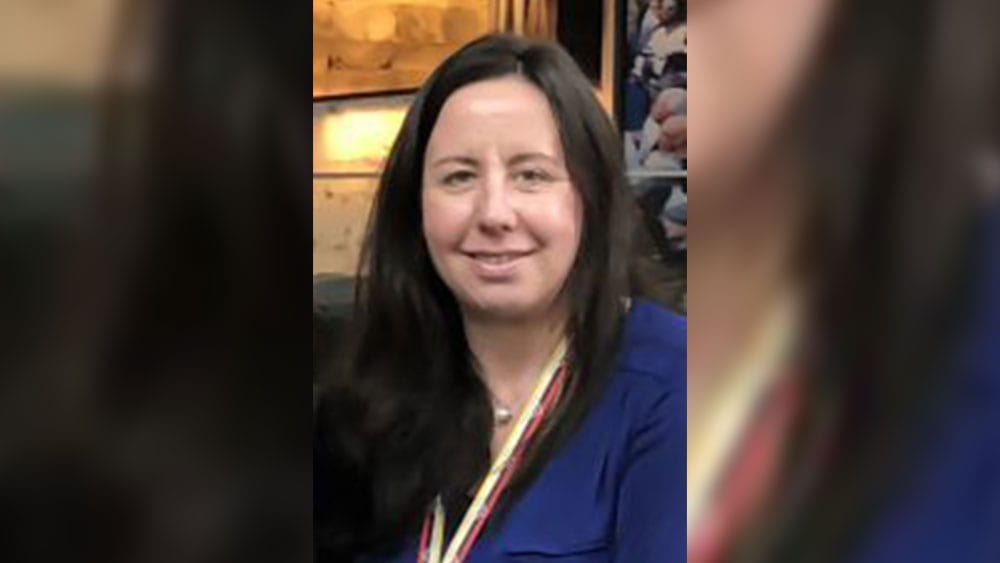
Dr. Karine Duhamel, the national inquiry’s director of research. (APTN file)
In addition to Dr. Duhamel and the other members, the inquiry’s research team was also crucial to the forensic document review team, as well as the National Family Advisory Circle and grandmother advisors.
“I can tell you it’s really important that the grandmothers bring their perspective to a forensic audit of police and agency files, because you can look at how police are supposed to perform their investigations and how they’re supposed to interact with people according to their own policies,” said Robinson.
“[The] grandmothers and Elders helped raised awareness of how some of those policies and approaches may not be appropriate because they don’t have that Indigenous lens.”
Many of these advisors are family members themselves with direct experience with missing and murdered Indigenous women and girls, or a survivor of violence.
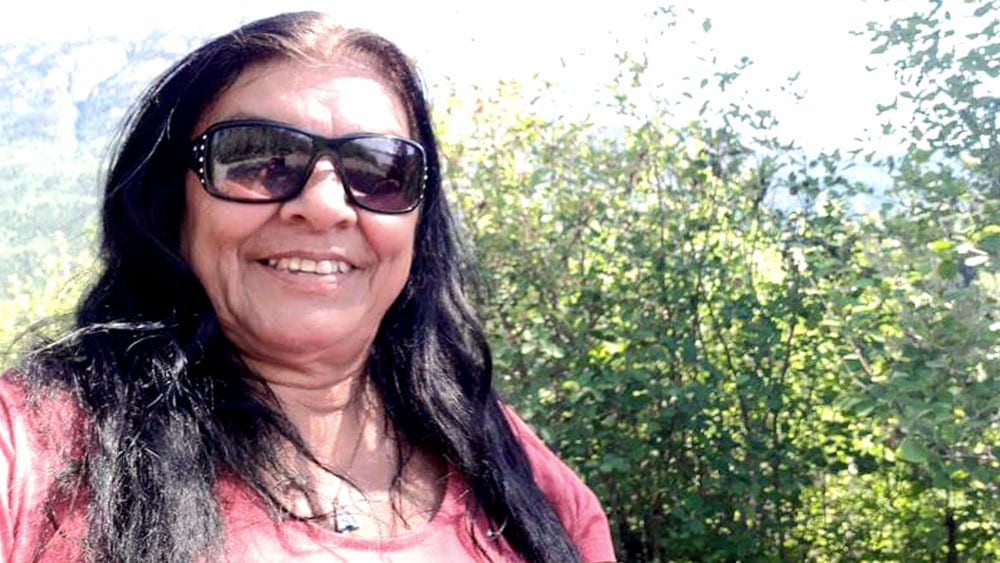 Gladys Radek, a family member and member of the National Family Advisory Circle. (APTN file)
Gladys Radek, a family member and member of the National Family Advisory Circle. (APTN file)
“I think grandmothers should be included in every way, shape and form in everyday society, especially these days because of the atrocities against Indigenous people,” said Gladys Radek.
“We have to remember that back in the old days everybody looked up to the grandmothers and the grassroots people.”
Radek is the aunt to Tamara Chipman, a young mother who vanished along Highway 16, known as the Highway of Tears near Prince Rupert, B.C., in September 2005.
The forensics team has now completed their task and returned to their former employers or to other opportunities.
Final reports translated in several Indigenous languages
The report is currently being translated into French, and numerous Indigenous languages, such as Inuktitut and Inuinnaqtun, and the executive summary will be available in Dene, Gitxsan, Innu-aimun, James Bay Cree, Mi’kmaq, Michif, Mohawk, Oji-Cree, Ojibway, Plains Cree, Shuswap, French, English, Inuktitut and Inuinnaqtun.
According to a news release, their final report was granted additional time “due to an obligation to achieve the highest quality of translation.”
The final report will include the experiences of 1,484 family members and survivors of violence and 83 experts, knowledge keepers and officials, and 819 people who shared their experiences through artistic expressions.
READ: Commissioners 10 recommendations in the interim report
In November 2017, the inquiry released their interim report calling for a national police task force to review and investigate cold cases, a healing fund for families, and to revive the Aboriginal Healing Foundation, now defunct since 2014, that helped residential school and inter-generational survivors.





